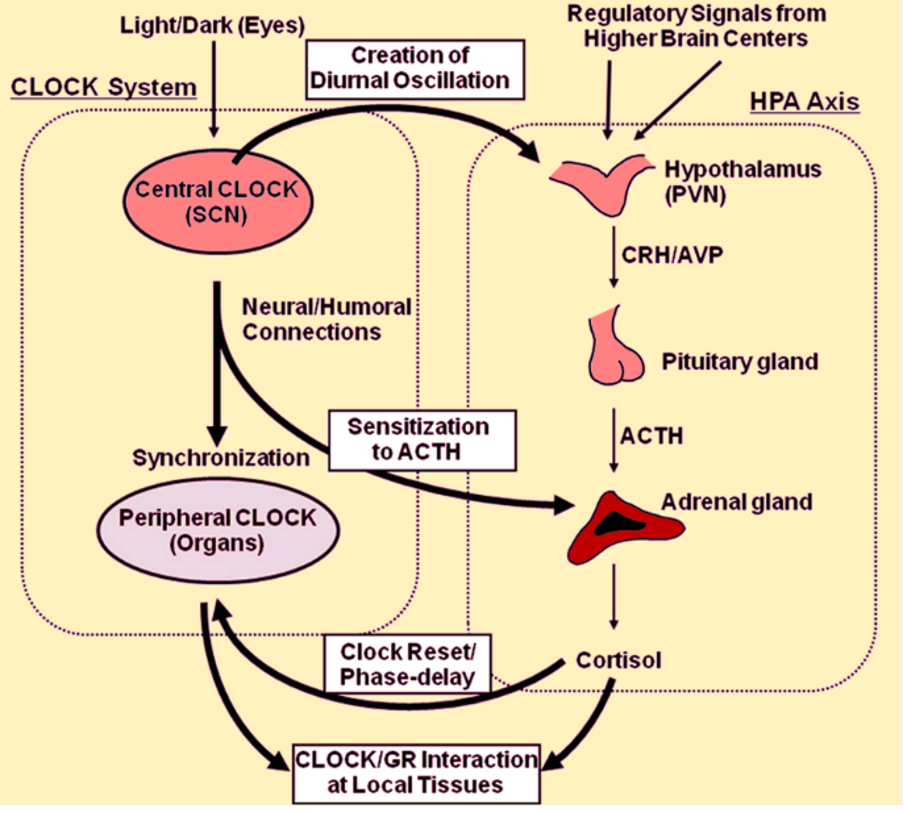
Figure 5. The light-activated central CLOCK located in the suprachiasmatic nucleus (SCN) is orchestrating the daily rhythmic release of glucocorticoids by influencing the activity of the hypothalamic-pituitary-adrenal (HPA) axis through efferent connections from the SCN to the CRH/AVP-containing neurons of the PVN. Additionally, splanchnic nerve innervation to the adrenal medulla via the SCN-ANS axis also contributes to circadian glucocorticoid secretion and resets the adrenal local clock through modulating the adrenal sensitivity to ACTH by the action of epinephrine. In turn, secreted glucocorticoids reset and phase-delay circadian rhythm of the peripheral CLOCKs by stimulating the expression of several CLOCK-related genes; this is particularly important for temporal adjustment of the body’s activity against stress. The peripheral CLOCKs also regulate the effects of glucocorticoids in local tissues through interactions between Clock/Bmal1 and glucocorticoid receptors, providing a local counter regulatory feedback loop to the effect of central CLOCK on the HPA axis. CRH: corticotropin-releasing hormone; AVP: arginine vasopressin; PVN: paraventricular nucleus; Clock: circadian locomotor output cycles kaput transcription factor; Bmal1: brain-muscle-arnt-like protein 1 transcription factor (the heterodimer partner of Clock). [Adapted from Nader, N, Chrousos, GP, Kino T. Trends Endocrinol Metab 2010;21:277].
